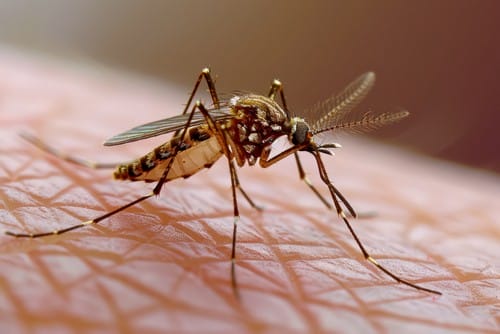Top 5 Effective Methods to Keep Spiders Out of Your Texas Home
Quick & Dirty Pest Control Tips
- Texas’ warm, humid climate makes it paradise—for pests like fire ants, mosquitoes, and grubs.
- Fire ants? Bait them and keep things dry.
- Mosquitoes? Dump standing water and plant some mosquito-repelling greenery.
- Grubs? Aerate your lawn and let beneficial nematodes do their thing.
- Native plants can naturally cut down on pests by attracting the good bugs that eat the bad ones.
 Why Texas Needs Its Own Pest Playbook
Why Texas Needs Its Own Pest Playbook
Texas isn’t like other places, and its pest problems aren’t either. With blazing summers and mild winters, this state is basically a year-round vacation spot for all sorts of creepy crawlies. That means your pest control strategy needs to be just as tough as Texas itself.
Pro Tips for Winning the Pest Battle
- Keep an eye out for signs of infestation before they turn into a full-blown invasion.
- Customize your pest control tactics based on the specific critters in your area.
- Go green when possible—nature has some solid pest-fighting tricks up its sleeve.
Texas’ Climate: A Pest Magnet
Texas is a mixed bag of climates, from humid subtropical in the east to dry desert in the west. This variety means different regions have different pest issues. Humid areas? Expect mosquitoes and fire ants. Drier areas? Rodents looking for water will move in faster than uninvited guests at a backyard BBQ.
Texas’ Top Pests (And How to Handle Them)
Fire Ants: The Tiny Terrors
Fire ants don’t just sting—they form huge colonies fast. To stop them:
- Use bait treatments (best applied when they’re out looking for food, usually cooler parts of the day).
- Keep your yard dry—fire ants hate it when their environment isn’t nice and damp.
 Mosquitoes: Buzz Off!
Mosquitoes: Buzz Off!
Texas mosquitoes aren’t just annoying; they can spread diseases. Here’s how to kick them to the curb:
- Eliminate standing water (buckets, old tires, clogged gutters—get rid of them!).
- Plant mosquito-repelling plants like citronella, lavender, and marigolds.
- Use insect repellents and wear protective clothing at dusk and dawn.
Grubs: Lawn Wreckers
Grubs love eating grassroots, which means ugly brown patches in your yard. Fight them with:
- Regular lawn aeration (keeps soil healthy and makes life harder for grubs).
- Beneficial nematodes (tiny worms that eat grubs—think of them as nature’s pest control squad).
Green Pest Control: Nature’s Got Your Back
 Why Go Native?
Why Go Native?
Planting native species doesn’t just save water—it also attracts helpful insects that prey on pests. Less spraying, more natural balance.
Let Nature Do the Work
Encourage pest-fighting allies like ladybugs, lacewings, and praying mantises by planting nectar-rich flowers. Provide shelter and water to keep them around longer.
DIY Natural Pest Solutions
- Neem Oil: Interferes with insect growth and reproduction.
- Diatomaceous Earth: Cuts through insect exoskeletons (brutal but effective).
- Insecticidal Soap: Gentle on plants, tough on bugs.
 Keeping Your Yard Healthy (So Pests Stay Away)
Keeping Your Yard Healthy (So Pests Stay Away)
Watering: Don’t Overdo It
- Too much water = root rot, fungi, and a bug buffet.
- Use drip irrigation or soaker hoses to target roots directly.
Mowing Matters
- Keep grass at the right height—too long invites pests, too short stresses the lawn.
- Sharp mower blades = clean cuts, less disease risk.
Soil and Fertilizer: Balance is Key
- Test your soil to make sure it has the right pH and nutrients.
- Compost and organic matter boost soil health naturally.
- Over-fertilizing leads to excessive growth, which attracts aphids and other pests.
Safe Pesticide Use (If You Really Need It)
Choosing the Right Pesticide
- Go for targeted solutions—broad-spectrum chemicals wipe out good bugs, too.
- Always read the label and follow instructions (yes, even if you think you don’t need to).
Applying Pesticides Safely
- Wear gloves, goggles, and protective clothing.
- Apply on calm days to prevent drift.
- Keep kids and pets away until it’s completely dry.
Disposing of Pesticide Containers
- Never reuse them.
- Rinse thoroughly and follow local disposal rules.
- Some areas offer recycling programs—check with waste management.
Final Thoughts: Stay Ahead of the Pests
Texas pest control isn’t a one-and-done deal. Keeping pests in check requires ongoing effort and adaptability. Regular inspections and preventive measures are your best defense.
Quick Recap of Best Practices:
- Check for pests regularly.
- Use native plants to attract beneficial insects.
- Opt for natural pest control whenever possible.
- Follow proper lawn care techniques.
- Use pesticides wisely and responsibly.
FAQs: Your Top Pest Questions Answered
What are the most common Texas pests?
- Fire ants
- Mosquitoes
- Grubs
- Chinch bugs
- Fleas
What’s a natural way to keep fire ants away?
- Keep your yard clean and dry.
- Use diatomaceous earth around your home’s perimeter.
When’s the best time to apply pesticides?
- Early morning or late afternoon when temps are cooler and winds are calmer.
- Avoid applying before rain to prevent runoff.
Do organic pesticides work on mosquitoes?
Yes! Neem oil and garlic spray help, but combining them with other methods (like eliminating standing water) is best.
How often should I check for pests?
- Weekly, especially in warmer months when pests thrive.
- Look for damage like chewed leaves, brown grass patches, or ant mounds.
By staying proactive, you can keep your Texas home pest-free year-round—without turning your yard into a chemical war zone. With the right mix of prevention, natural solutions, and smart pest management, you’ll keep your home comfortable and your garden thriving.
